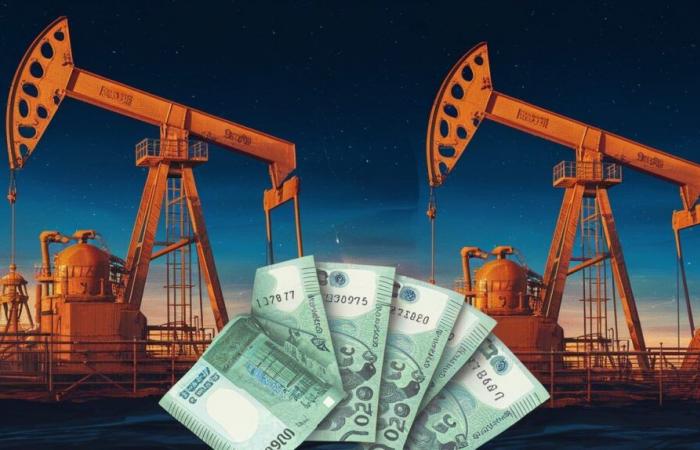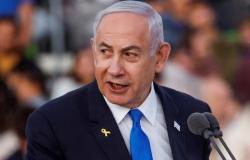Oil giant Aramco sees its net profit fall 15% in Q3 2024 to $27.56 billion, penalized by low crude prices and refining margins. How is Saudi Arabia adapting to this difficult market context? Discover the economic and strategic issues…
Aramco, the Saudi oil juggernaut, has just announced a significant drop of 15% in its net profit in the third quarter of 2024 compared to the same period the previous year. Weighed down by depressed crude prices and refining margins under pressure, the group’s profits amounted to 27.56 billion dollars over the period, compared to 32.58 billion a year earlier. A decline which raises questions about the resilience of the Saudi economy, of which Aramco is an essential pillar.
An oil market under tension
Behind this poor performance lies a cocktail of unfavorable factors. While Saudi Arabia, the world’s largest oil exporter, has a production capacity of 12 million barrels per day (mbd), it is currently pumping around 9 mbd. A voluntary moderation intended to support prices, but which mechanically weighs on the volumes sold by Aramco.
At the same time, refining margins remain under pressure, further straining the profitability of the national company. A situation which reflects the difficulties of the oil market as a whole, faced with lackluster global demand and persistent uncertainties on the geopolitical front.
OPEC+ maintains the course of reductions
Faced with this delicate environment, OPEC+ is trying to keep control. The cartel led by Riyadh and Moscow has just renewed until the end of 2024 an additional cut of 2 mbd compared to its quotas already in force. A decision which should make it possible to maintain the barrel of Brent above 75 dollars, a level deemed acceptable by the kingdom.
Aramco remains strong despite headwinds
Despite its declining profits, Aramco claims to be able to weather the storm. “The company generated solid net profit and significant cash flow in the 3rd quarter,” declared its CEO Amin Nasser. The group also intends to continue its investments in order to “strengthen its position as a major global player in energy and petrochemicals”.
Vision 2030: the challenge of diversification
For Saudi Arabia, Aramco remains a central asset. The main provider of resources for the state budget, the group helps finance the major projects of the “Vision 2030” plan supported by Crown Prince Mohammed bin Salman. This vast strategy aims precisely to prepare for the post-oil era through all-out diversification of the economy.
On the menu: colossal investments in tourism with the construction of a futuristic megalopolis in the desert (Neom project), a doubling of the capacities of Riyadh airport and the development of unique archaeological and natural assets. Initiatives intended to gradually reduce Saudi dependence on black gold.
A delicate energy transition
While oil revenues have long represented more than 3/4 of Saudi GDP, the kingdom is now showing its ambition to become a champion of renewable energies and green hydrogen. Objective: to offer a credible alternative to oil at a time when global warming is emerging as one of the major challenges of the 21st century.
In the short term, however, the hydrocarbon windfall remains essential to finance this profound change in the Saudi economic model. A paradox illustrated by Aramco’s latest mixed results: if profits are in decline, they remain absolutely strategic to establish the road map drawn up by the country’s leaders.
Staying the Course Despite Volatility
And caution remains in order for the Saudi giant. After a 2022 financial year already down sharply compared to the exceptional 2021 year, Aramco has presented quarterly results that have been up and down since the start of the year. A roller coaster that reflects the hypersensitivity of oil prices to macroeconomic and geopolitical hazards.
Despite this turbulence, the group intends to maintain the course of its 360-degree strategy, built around further integration of its upstream and downstream activities, and new international breakthroughs. The underlying ambition is to remain essential in a rapidly changing energy world. A hell of a challenge for the behemoth with 70,000 employees.
The drop in Aramco’s profits in the third quarter, notable as it may be, therefore does not fundamentally call into question the trajectory charted by the Saudi giant and its main shareholder, the State. It nevertheless reminds us, if necessary, how the kingdom remains exposed to mood swings in the oil markets. Hence the need for Riyadh to push the diversification of its economic fabric a little further.
Focus on diversification and innovation
Development of renewable energies, digital transformation, upgrading of industrial value chains, circular economy: there is no shortage of avenues to give substance to this “Vision 2030” desired by leaders. So many levers which should, in the long term, cushion the impact of blows like the one currently being experienced by Aramco.
Faced with a market environment that has become structurally volatile, the key to success will lie in the ability of the Wahhabi kingdom to simultaneously carry out careful management of its oil resources and accelerate its reform projects. A balancing act that Prince Mohammed intends to succeed with flying colors, with the unfailing support of Aramco called to reinvent itself. History will remember if the bet was the right one.






